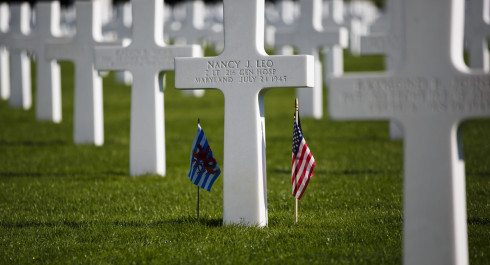
Hamm
On a plateau in the east of the capital lies the district of Hamm. A surprisingly large district for its little over 1,500 inhabitants, covering a greater area than the more densely populated Kirchberg district, for example.
Village charm and an industrial past
Today’s Hamm started out small. Back in 1796, there were just 90 people living here. Although tiny in terms of population, Hamm – shown on maps at the time as Hamme – had long been of strategic importance. In Roman times, there was a guardhouse here that controlled access to the Alzette valley. The French troops of King Louis XIV also recognised the strategic importance of Hamm, setting up their military camp outside the city walls here in 1684, with the intention of conquering the fortress and Luxembourg as the Gibraltar of the North. Hamm is first mentioned in a deed of sale from 1243.

The industrial revolution
However, it was thanks to the construction of five mills in the area that led to Hamm’s growth in both population and importance, and specifically to two industrial pioneers from Luxembourg – the Godchaux brothers – who laid the foundations for the country’s textile industry boom when they founded their first factory here on the banks of the Alzette in 1835. At the peak of this boom, there were more than 800 people working in the country’s weaving mills and oldest textile factories. The First World War and decline of Hamm’s textile industry left the municipality in dire economic difficulty. Consequently, in 1920, Hamm was absorbed into the City of Luxembourg. Today, the Hamm valley, known locally as the Hammer Dällchen, with its forests and steep cliffs, is a popular destination for locals and tourists alike.
One of the old mills now houses an art gallery. Atelier op der Schläiffmillen also greets visitors with a number of works of art outside the gallery, including a pink sculpture by artist Rafael Springer and, on the other side of the road, next to the canoe clubhouse, a striking sculpture of a standing canoe.
A tall chimney at what was once Follmühle mill and weirs in the Alzette river, used to control the water supply for the mills in their heyday, and is just one of the relics of this industrialisation era.

Tour
Godchaux Circular Walk
Learn more about the beginnings of industrialisation in the suburbs of...
5,076 white crosses
Aside from the industrial estate just north of the church, Hamm has largely retained its village charm. It was not until 1931 that the district began to expand, with the construction of 70 detached houses around the Catholic church and, three decades later, a hospital.
The church dates back to the 14th century, when there was also a monastery in Hamm. Next to the Catholic church, in the centre of Hamm, stands a wayside cross bearing the year 1739.
On the façade of the church, two memorial plaques, erected by the American Luxembourg Society, commemorate Remembrance Day and the American servicemen who lost their lives here during the Second World War. Today, the 5,076 white crosses at the Luxembourg American Cemetery and Memorial in Hamm are a stark reminder of this loss.

Churches & Cemeteries
American Military Cemetery
In Hamm we are face to face with the graves of American soldiers who p...
Note: As Hamm’s former mills and weaving mills are now located in the new district of Pulvermühle, further information on the history of the textile factories, which sprang into life in 1835, can be found on the webpage for the present-day district of Pulvermühle.
Photo gallery
How to get there?
By car:
Find the best parking for your stay with our Luxembourg-city parking guidance system.
By public transport:
To go around the city, check out www.mobiliteit.lu which offers live and practical information on public transport in Luxembourg.
Useful information: all buses, trams and trains within the country of Luxembourg are free of charge for citizens and visitors alike.











